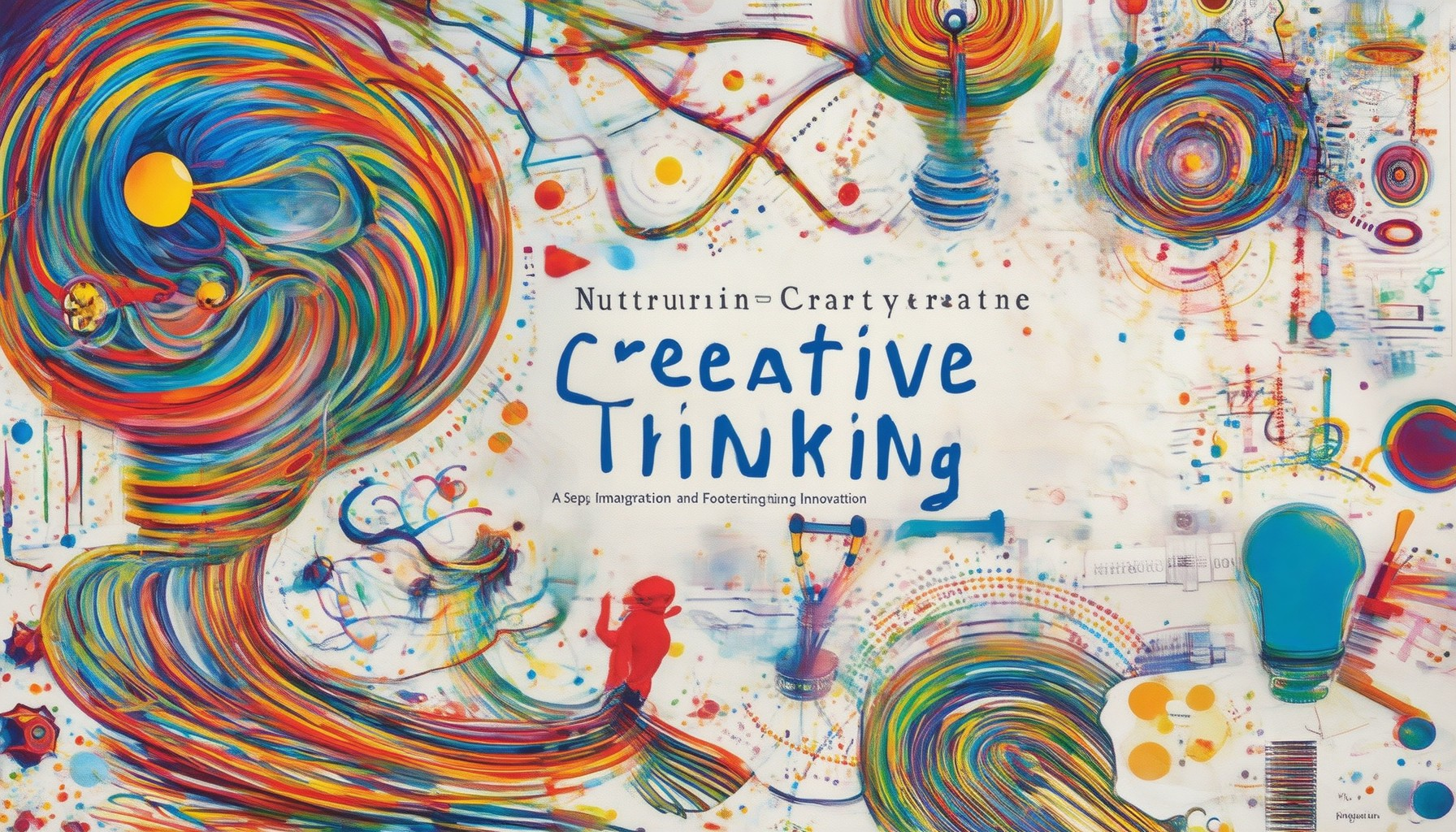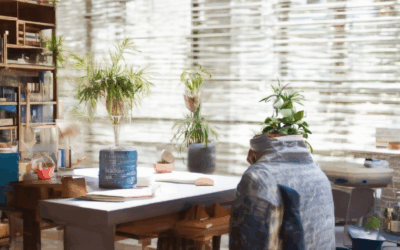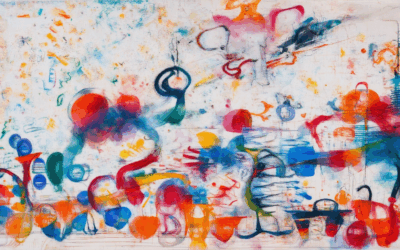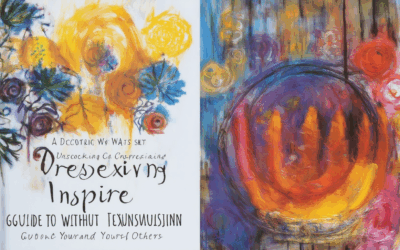In today’s fast-paced and ever-evolving world, creativity stands as a cornerstone of innovation and progress. While some may believe creativity is an innate talent, the truth is that it can be cultivated and nurtured through deliberate effort and practice. Nurturing creative thinking isn’t limited to artists or writers—it’s a skill everyone can develop, regardless of their background or profession. This guide dives into the intricacies of fostering creativity, exploring what it means to nurture a creative mindset and how it can be applied in various aspects of life.

Nurturing Creativity
Creativity is a powerful force that drives innovation, inspiration, and personal growth. Nurturing creativity involves fostering an environment where individuals can thrive, explore their passions, and bring their ideas to life. At Patrick Mettraux, we believe that creativity is not just an inherent talent but something that can be cultivated through dedication, curiosity, and the right conditions.
Key Components of Nurturing Creativity
- Encouraging Exploration
- Creativity thrives in environments where individuals are free to explore diverse perspectives and ideas. By exposing oneself to various cultures, experiences, and viewpoints, one can broaden their creative horizons.
- Explore our resources on cultural exploration and creative development.
- Providing a Supportive Environment
- A supportive atmosphere is essential for creativity to flourish. This includes having access to tools, resources, and mentors who can guide individuals through their creative journey.
- Support is available through our network of creatives and industry experts.
- Fostering a Growth Mindset
- Creativity is often the result of persistent effort and resilience in the face of challenges. Cultivating a growth mindset helps individuals embrace failure as a stepping stone to success.
- Discover how to cultivate a growth mindset and unlock your creative potential.
- Creating Opportunities for Expression
- Creativity requires platforms to showcase talent. Whether through art exhibitions, publishing platforms, or collaborative projects, having avenues for expression is crucial.
- Explore our opportunity platform to share your work with the world.
The Role of Patrick Mettraux
At Patrick Mettraux, we are committed to inspiring and empowering creators. Our platform serves as a hub for sharing stories, tips, and insights that help individuals nurture their creativity. From thought-provoking articles to interactive tools, we aim to be your go-to resource for creativity.
By embracing these principles, individuals can unlock their creative potential and contribute meaningfully to their fields. Nurturing creativity is not just about individual growth; it’s about fostering a culture where everyone can thrive and create.
Nurturing a Creative Mind
Creating a fertile ground for creativity requires intentional effort and consistent practice. Here are proven strategies to unlock and cultivate your creative potential:
- Embrace Curiosity and Exploration:** Stay curious about the world around you. Explore new experiences, cultures, and ideas. The more diverse your exposure, the richer your creative palette becomes.
- Prioritize Passion Over Perfection:** Create without the pressure to be perfect. Focus on expressing your unique vision rather than trying to meet external expectations.
- Practice Regular Creativity:** Dedicate time daily to engage in activities that stimulate your creativity. Whether it’s journaling, painting, or brainstorming, consistency is key to growth.
- Learn from Others:** Study the works of artists, writers, and innovators who inspire you. Their techniques and approaches can provide valuable insights and fuel your own creativity.
- Stay Open-Minded:** Be willing to experiment and take risks. Embrace failure as a learning opportunity and remain open to new perspectives and ideas.
- Engage in Collaborative Projects:** Working with others can spark fresh ideas and push your boundaries. Collaborative efforts often lead to innovative outcomes.
- Set Clear Goals:** Define your creative objectives and track your progress. Having a direction gives you focus and helps measure your growth over time.
- Find Inspiration in Everyday Moments:** Look for beauty and wonder in the ordinary. Many great ideas emerge from observing the world around us.
- Build a Supportive Environment:** Surround yourself with people who encourage and challenge you. A positive community can be a powerful catalyst for creativity.
- Stay Physically and Mentally Healthy:** Creativity thrives in a healthy body and mind. Prioritize sleep, nutrition, and mental well-being to sustain your creative efforts.
By implementing these strategies, you can unlock your creative potential and continue to grow as an individual. Remember, creativity is a journey, and every step forward, no matter how small, is a victory.

What Are the 5 Stages of Creative Thinking?
The creative thinking process is a complex yet essential skill that drives innovation and problem-solving. Below are the five primary stages of creative thinking, each serving a unique purpose in fostering originality and effectiveness:
- Observe : This stage involves gathering information and understanding the problem or challenge at hand. Observers often analyze situations from various angles, considering both the big picture and subtle details. By remaining open-minded, they can uncover patterns and opportunities that others might overlook.
- Generate : Once observed, the next step is to generate ideas. This is where creativity flourishes, as individuals brainstorm potential solutions or concepts. Techniques like mind mapping or lateral thinking can be particularly effective during this phase.
- Choose : After generating a pool of ideas, the decision-making process begins. This stage involves evaluating which ideas are most viable, align with goals, and have the highest potential for success. Critical thinking is crucial here to narrow down the options.
- Implement : The chosen idea moves from concept to reality in this stage. Implementation requires careful planning, resource allocation, and execution. Effective communication and collaboration are key to ensuring the plan is carried out smoothly.
- Reflect : Finally, reflection allows for assessment and improvement. By analyzing the outcomes of the implemented idea, individuals can identify strengths, weaknesses, and areas for future enhancement. This feedback loop is vital for ongoing growth and development.
By mastering these stages, individuals can enhance their ability to tackle challenges creatively and effectively, driving innovation across various domains.

The Four Cs of Creative Thinking
The four Cs of creative thinking are essential concepts that guide individuals in developing innovative solutions and approaches. Here’s a breakdown of each component:
- Creativity
- The ability to generate unique and original ideas.
- Involves thinking outside the box and exploring unconventional solutions.
- Critical Thinking
- Evaluates and assesses ideas to determine their feasibility and potential impact.
- Focuses on problem-solving and refining concepts to enhance their effectiveness.
- Communication
- Effectively conveying ideas to others through clear and concise language.
- Ensures that creative concepts are understood and appreciated by diverse audiences.
- Collaboration
- Working with others to combine strengths and perspectives.
- Foster teamwork and shared responsibility in achieving creative goals.
By mastering these four Cs, individuals can enhance their capacity for innovation and contribute meaningfully to various projects and endeavors.
What Are the 4 P’s of Creativity?
The 4 P’s of creativity are a framework used to understand and analyze the multifaceted nature of creativity. These components work together to define and evaluate creative processes, products, and outcomes. Here’s a breakdown of each:
- Person :
The “Person” element focuses on the individual behind the creativity. It encompasses their personal traits, experiences, and background, which significantly influence their creative output. A creative person might possess unique problem-solving skills, curiosity, and a willingness to experiment, all of which contribute to innovative ideas. - Process :
The “Process” refers to the methods and techniques employed to generate creative solutions. This includes systematic approaches like brainstorming, mind mapping, or using tools like design thinking. Effective processes often involve iteration, feedback loops, and collaboration, which refine ideas into tangible concepts. - Product :
The “Product” is the tangible result of creativity, such as a painting, invention, or digital content. It represents the end output and is evaluated based on originality, functionality, and impact. A strong product demonstrates creativity effectively communicates its value. - Perspective :
“Perspective” relates to the viewpoint or mindset an individual brings to their creative endeavors. It includes cultural, emotional, or personal biases that shape their interpretation of problems and solutions. A broad perspective allows creators to see possibilities others might overlook.
By understanding these four elements, individuals can develop a well-rounded approach to creativity, fostering innovation and producing meaningful outcomes.

What Are the Five Types of Creative Thinking?
Creative thinking is a crucial skill that drives innovation and problem-solving. Understanding the various types of creative thinking can help you unlock your potential and approach challenges in new ways. Here are the five primary types of creative thinking:
- Aesthetic Thinking
- Aesthetic thinking focuses on beauty, design, and artistry. It involves imagining how things look, feel, and function in a visually appealing manner. This type of thinking is essential for designers, artists, and anyone looking to create something visually stunning.
-
Divergent Thinking
- Divergent thinking is the ability to generate numerous ideas by exploring a wide range of possibilities. It’s often associated with brainstorming sessions where you let your mind wander freely without judgment. This type of thinking is great for coming up with creative solutions to complex problems.
-
Lateral Thinking
- Lateral thinking involves approaching problems from a unique angle, often outside traditional frameworks. It’s about connecting unrelated ideas to find innovative solutions. This type of thinking is particularly useful in fields like marketing and entrepreneurship.
-
Convergent Thinking
- Convergent thinking is the opposite of divergent thinking. It focuses on narrowing down options to find the most effective solution. This type of thinking is practical and is often used in scientific research and engineering.
-
Inspirational Thinking
- Inspirational thinking is about motivation and envisioning a better future. It’s the kind of thinking that sparks passion and drive, encouraging individuals to pursue goals that inspire them. This type of thinking is key for leaders and visionaries.
By mastering these five types of creative thinking, you can develop a versatile skill set that enables you to tackle diverse challenges and opportunities. Whether you’re an artist, entrepreneur, or problem-solver, understanding these techniques can help you unlock your creativity and achieve extraordinary results.





0 Comments